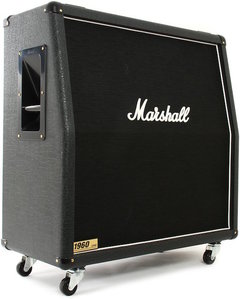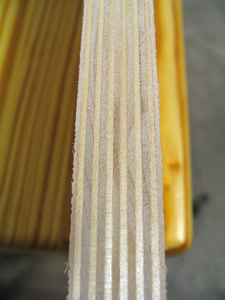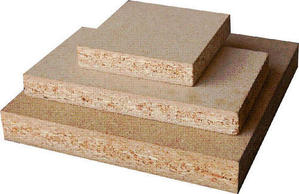- in Gear , Guitars by Bobby Owsinski
How The Sound Of A Speaker Cabinet Is Affected By The Type Of Wood Used
 You might not be aware how much the type of wood used for building a speaker cabinet greatly contributes to its tone. Cabinets, like guitars, can be built out of just about any kind of wood. But just like guitars, only a few kinds of wood are used because of their sound or cost. In this excerpt from my Ultimate Guitar Tone Handbook (written with my buddy Rich Tozzoli), we look at the most popular building materials used in speaker cabinet construction today and how they affect the tone that you’ll hear when you crank them up.
You might not be aware how much the type of wood used for building a speaker cabinet greatly contributes to its tone. Cabinets, like guitars, can be built out of just about any kind of wood. But just like guitars, only a few kinds of wood are used because of their sound or cost. In this excerpt from my Ultimate Guitar Tone Handbook (written with my buddy Rich Tozzoli), we look at the most popular building materials used in speaker cabinet construction today and how they affect the tone that you’ll hear when you crank them up.
“Marshall cabinets are built out of 11 ply Baltic birch, a wood that’s known for its strength and light weight. This is one of the reasons (besides the speakers and the closed back) that nothing else sounds quite like a Marshall cabinet. Other manufacturers also use birch, but some use the cheaper and thinner 3 or 5 ply, which compromises the sound. Others use 13 ply birch to make the cabinet more robust in transport, but that makes them heavier as well (see the graphic on the right below).

13 ply baltic birch
Early Fender cabinets were made of pine, which is light and has it’s own tone. Pine was inexpensive and easy to get, but it wasn’t the strongest wood, which was a negative for the gigging musician. Like most manufacturers, Fender slowly but surely changed their cabinet wood, first to marine plywood, and then particle board (known as MDF – Medium Density Fiberboard). MDF is very strong and inexpensive, but is somewhat neutral sounding at best, and harmonically dissonant at worst.
Today, most manufacturers (even Fender and Marshall) use MDF for their inexpensive cabinets, and birch or birch composite for their more expensive or vintage cabinets. (see the graphic on the left) That’s why you can have two cabinets from the same company loaded with the same speakers, yet they can sound completely different.

MDF
Plywood and MDF has less cabinet resonance than solid woods like pine, cedar and birch. The resonance is what contributes to the “warmth” of the sound, but can also be responsible for blurring the notes because of the slight acoustic absorption that also occurs. That means that the sound coming out of a pine cabinet may be full and round, but it won’t project as well as a cabinet made of plywood. Baltic birch is chosen because of its musicality even though it’s not quite as resonant as pin,e although it does have a bit harder edge. The resonance that occurs with MDF is often described as “dead” and “atonal.” Anything that adds color actually wastes a bit of the speaker output since some of the energy vibrates the wood instead of the air.
Sometimes cabinets were designed out of necessity instead of a grand tonal design. In the case of the famous Marshall 1960 4×12, the cabinet was built as a way to contain the four Celestion G12 speakers, which were cheap and plentiful at the time. These speakers were rated at just 15 watts and were prone to flapping on hard hit low notes, so the closed back cabinet helped limit the cone travel because of the air suspension, and having four speakers kept the amp from blowing them out.”
You can read more from The Ultimate Guitar Tone Handbook and my other books on the excerpt section of bobbyowsinski.com.

